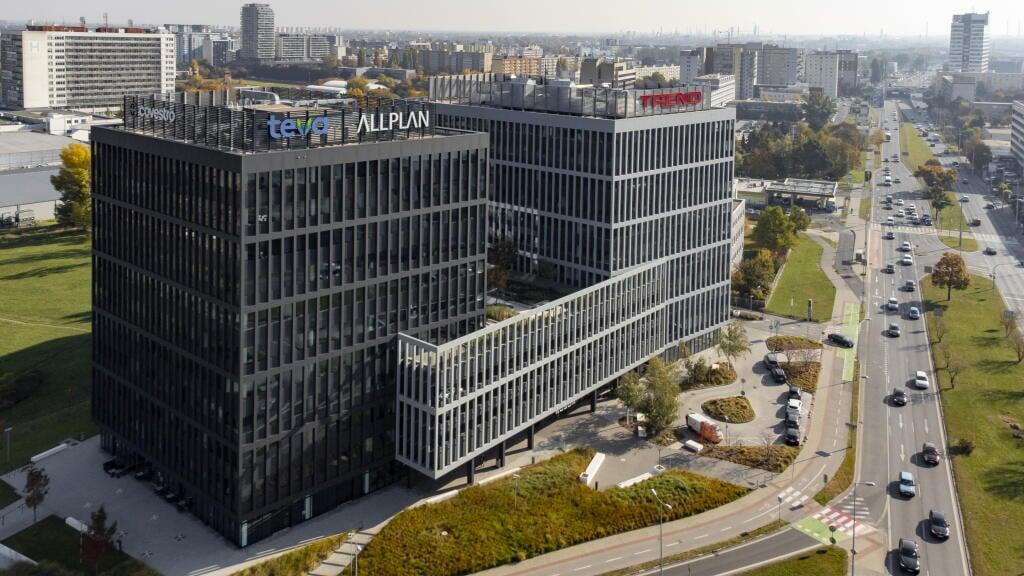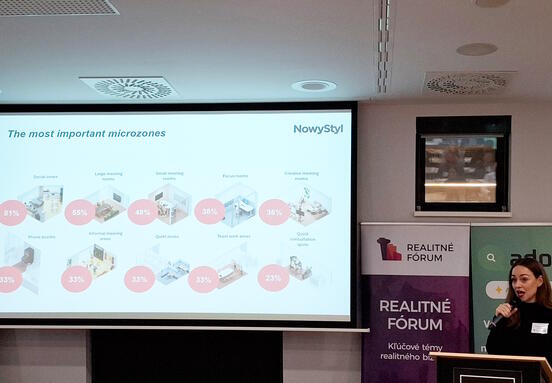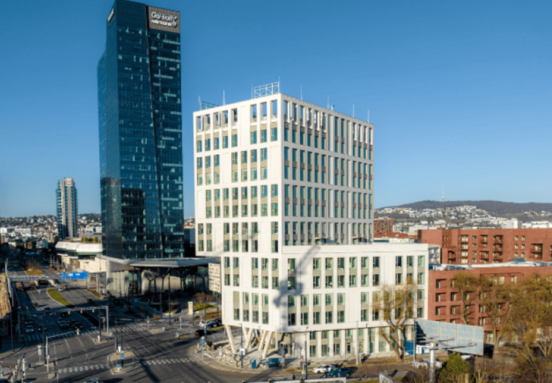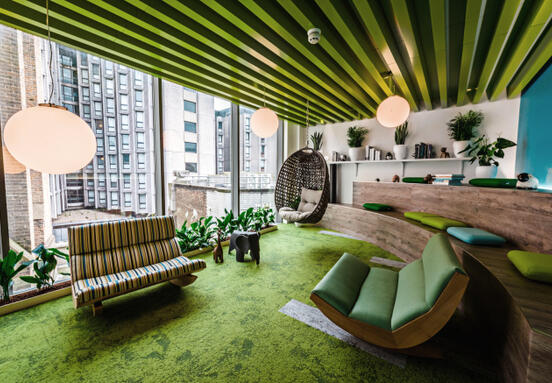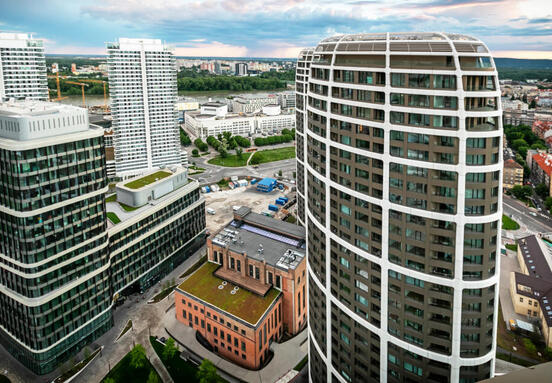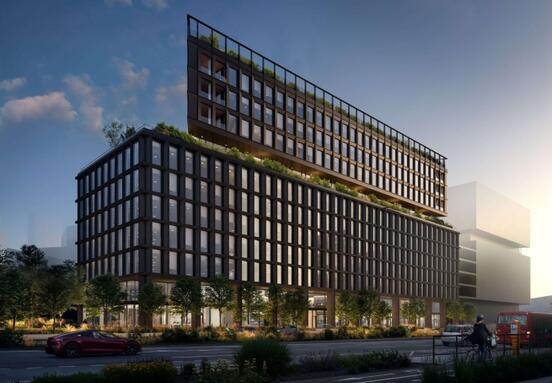The aim of this adjustment is to provide clearer and more targeted data to those who are active in the office market. However, this step does not mean that the market has weakened - its performance remains stable, while rental prices have recorded a slight increase.
Impact on statistics
The Bratislava Research Forum (BRF), which consists of Cushman & Wakefield, CBRE, Colliers International and iO Partners, has introduced a new methodology for calculating the supply of office space from the first quarter of 2025. Until now, the calculation also included buildings that are owned and fully used by a single entity - so-called "owner-occupied" properties. Although these buildings have historically helped to paint the overall picture of the market, they are no longer relevant for tenants or investors.
The new calculation focuses exclusively on commercially available space. The total supply of offices has thus decreased from the original 2.05 million square meters to 1.76 million square meters. Within this recalculated area, 20 percent of the supply is standard A+, 38 percent is standard A and 42 percent is standard B.
From the perspective of the ownership structure, the composition of the market remains stable. Approximately four percent of buildings are owned by the state and another ten percent are fully occupied spaces by owners who do not offer them on the market. This means that the commercially available supply makes up 86 percent of the total volume.
According to the definition of the Bratislava Research Forum, the office stock includes all buildings approved after 1993, which are renovated or newly built and meet the A or B standard. The flexibility of the premises, technical equipment and services such as reception, barrier-free access or backup power sources are also important.
Green buildings are growing
The office market in Bratislava is also following the growing pressure on sustainability and environmental standards. Up to 48 percent of the total area of office space (851,720 m²) has a valid sustainable building certificate. This is 45 out of 274 buildings in the capital of Slovakia.
The most widespread certification standard is BREEAM, which covers 60 percent of the certified area. Next comes LEED with 38 percent and the BREEAM/WELL GOLD combination makes up two percent. Three buildings achieved the highest BREEAM Outstanding rating – these are Twin City Tower, Pribinova 40 and the historically valuable Pradiareň 1900.
The Einpark Offices building is unique in that it is the only one in Bratislava to have received the LEED Platinum certificate and at the same time holds the LEED Zero Carbon status. This combination confirms not only high energy efficiency, but also carbon neutrality of the operation.
Green certifications are increasingly becoming a decisive factor in concluding lease agreements. Not only for international corporations pursuing ESG goals, but also for local companies that perceive operational efficiency as a long-term advantage.
Transactions grow year-on-year
The volume of lease transactions in the first quarter of 2025 reached 62,847 square meters, which represents a 3.30 percent decrease compared to the previous quarter. However, this is a 36.30 percent increase year-on-year, which indicates a return to activity in the market after a slowdown in the previous period.
The largest share of transactions (63 percent) was renegotiations of existing contracts (renegotiations), new leases accounted for 35 percent and expansions only 2 percent. This ratio points to the caution of tenants, who prefer to review existing contracts rather than sign new ones in the current market environment.
Among the sectors, consumer goods dominated, recording the largest single transaction with an area of 17,000 square meters in The Mill. In this case, it was a renegotiation of an existing lease. The financial sector was active in new leases in Twin City C and Westend Gate, each reaching more than three thousand square meters.
Other segments also saw significant transactions. For example, the IT sector leased new premises in Digital Park II+III with an area of 2,108 square meters, and Galvaniho Business Centrum I saw a contract negotiation for a technology company on an area of 1,893 square meters. Legal services and pharmaceuticals also appeared among the active market participants, although with smaller areas.
In terms of building quality, the largest volume of transactions was carried out in class A+ buildings (44 percent), followed by class A (40 percent) and class B (16 percent). This structure confirms the strong interest of tenants in modern, high-quality and sustainable spaces.
Office vacancy stagnates
Under the original methodology, which also included owner-occupied buildings, the vacancy rate reached 12.63 percent. According to the new methodology, which omits these buildings, the vacancy rate is 14.55 percent. This increase is due to a statistical effect - the excluded buildings were fully occupied and their exclusion thus "uncovered" the real vacancy rate.
By office building category, the vacancy rate is lowest in class A+ – 9.04 percent, followed by class B with 13.03 percent and the highest vacancy rate is in class A with 19.19 percent. This figure may be affected by temporary relocations of companies or the completion of new buildings without pre-leases. Until the end of 2025, Bratislava Research Forum will publish data according to both methodologies in order to maintain continuity and the possibility of long-term comparison of market developments.
Rents are growing, the trend is positive
Rent in premium office space (prime rent) reached 20 euros per square meter per month, which represents a slight increase compared to the previous quarter. Experts expect this growth to continue, especially in buildings that meet high environmental standards and offer modern technical solutions.
According to the BRF definition, this is the highest rent achieved in the best locations in Bratislava for the best quality units. However, this figure does not include incentives such as rental holidays or fit-out contributions, which can reduce the real effective price.
A comparison of the yields of office space and industrial/logistics parks shows that although the office market offers more stable leases and longer-term tenants, logistics currently has a higher yield. According to CBRE data, the prime yield for offices in Bratislava is approximately 5.25 percent, while for logistics parks it is 5 to 5.25 percent - as recently as 2023, the yield of logistics was below four percent.
Revenues in the logistics segment increased due to increased demand for warehouse and production space, especially from e-commerce, logistics and industrial production. Moreover, development activity is concentrated in regions with good connections to highways and cross-border infrastructure, which strengthens the attractiveness of this segment.
The office market, on the other hand, is still recovering from the pandemic and changing work models, where hybrid work reduces the need for permanent office space. Despite this, modern offices in Bratislava show stable occupancy and a growing demand for flexibility and quality.
In 2025, a slight revival of the office market can be observed - especially in the A+ segment of buildings that offer ESG solutions and high comfort. Logistics has so far maintained higher profitability, but its growth rate is slowing down, which indicates stabilization after rapid development in previous years. For investors looking for long-term returns with lower volatility, offices remain an attractive option. Logistics, on the other hand, appeals to those who accept higher risk for potentially faster returns.
